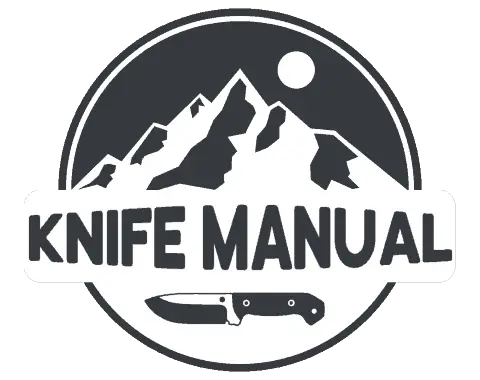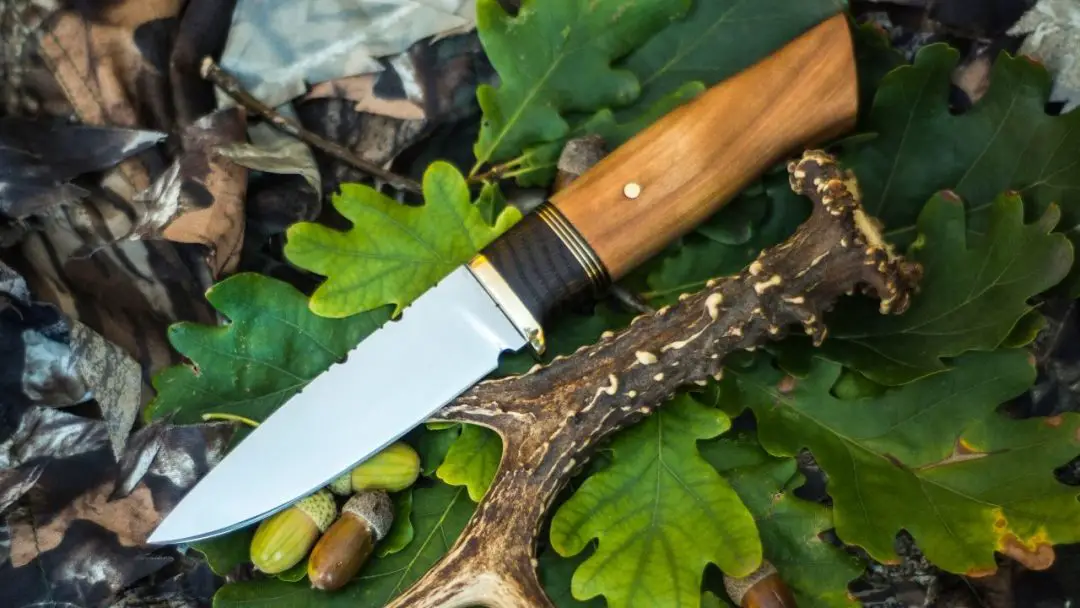
Personally, I know many family and friends who are avid hunters but absolutely swear by their hunting knives. But how useful are hunting knives, what are they used for, and do you actually need one? Here is what I found after many conversations and a lot of research.
A hunting knife is a very versatile tool to have with you when you are hunting or in the outdoors. Hunting knives can be used for many different tasks, but they are most useful to skin, gut, and process animals. A hunting knife is an essential tool if you like hunting or being in the outdoors.
When you are out in the outdoors hunting, there are a million different things that you have to be worried about and pay attention to. Having a hunting knife with you allows you to relax a little bit and focus on the task at hand knowing full well that when, and if, you succeed in taking down an animal, you have the right tool to properly dress and take care of the animal.
Table of Contents
Common Uses for Hunting Knives
Hunting knives, while they are specifically designed and mainly used for hunting-related activities, are actually quite versatile and can be used for a variety of different tasks.
As with almost all knives, hunting knives have nearly an endless list of possible ways to use them. It really comes down to what you need to get done and how you can go about it with a hunting knife. Basically, if there is a job that involves the use of a knife to complete it, a hunting knife can usually get the task done pretty well.
While any hunting knife can do a variety of different tasks, there are many different hunting knife designs that are more specialized to complete specific jobs with ease. Hunting knives come in a variety of different shapes, sizes, and designs and some knives do certain tasks better than others.
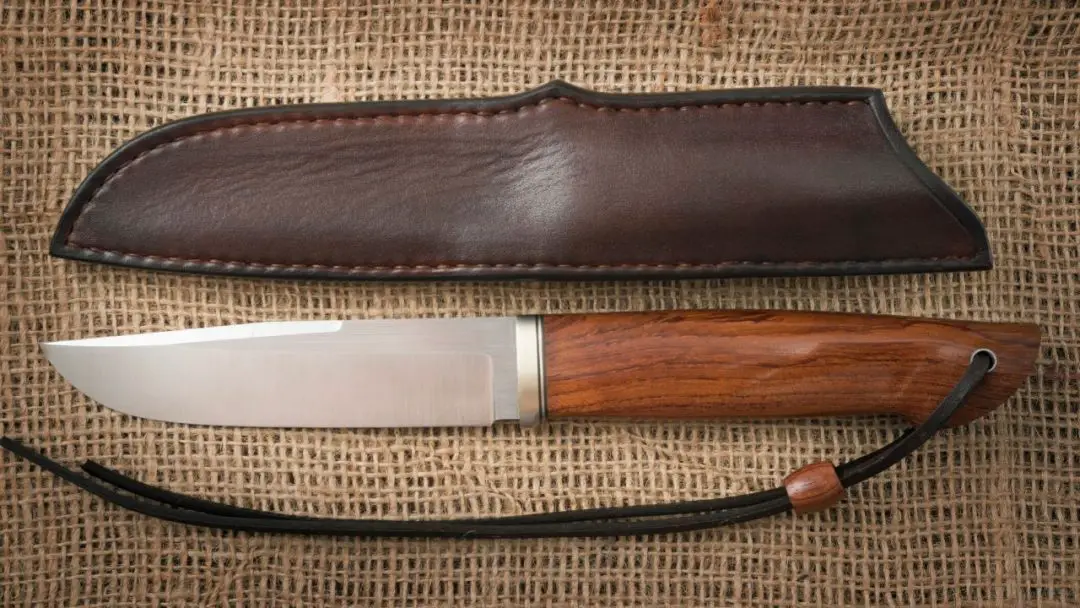
Hunting knives, while mainly used for hunting and butchering related tasks, are quite adaptable and can be used in a variety of situations and for many different tasks.
Below I will go into more depth on a few of the main and most common uses for a hunting knife. While this is far from an extensive list of everything that can be done with a hunting knife, below are some of the tasks that this type of knife does particularly well at completing and is most commonly used to do.
Field Dressing
Field dressing an animal is one of the most common and practical ways to use a hunting knife. Almost any hunting knife can get this sort of task done in no time and is almost perfectly designed to do this type of work.
Put simply, field dressing an animal entails removing many of the internal organs as soon as possible to help preserve the meat and make it last and taste as good as possible. This is usually done out in the field pretty soon after the animal is taken down.
While you can field dress an animal with almost any sharp cutting tool, a hunting knife is the preferred tool of many and is a personal favorite of mine. The entire process of field dressing an animal must be done pretty quickly to preserve the meat, so an agile and sharp hunting knife really comes in handy for this task.
Almost any hunting knife design, grind, and blade shape can get the task of field dressing an animal done. It is a pretty straight forward process that doesn’t take a large amount of precision or special procedures, so as long as your knife is sharp, you are pretty much good to go.
Hunting knives are great for a wide variety of tasks and jobs, but field dressing is one of their most practical applications while hunting. (Source)
Skinning
Another very common and practical way that a hunting knife can be used is for skinning an animal. This is usually done once the animal has been brought back to the camp, but it can be done in the field in some cases.
While there are many different methods and ways to skinning, they are all pretty fundamentally similar. Basically, when you skin an animal you remove the hide from the carcass to get to the meat of the animal.
Skinning an animal effectively and quickly takes a lot of practice and patience, but having a sharp and good hunting knife to help you along is a really good idea. In fact, skinning an animal becomes exponentially easier the sharper your knife is because you can easily cut through the skin instead of hacking at it.
There are specific hunting knives that are designed and made specifically for skinning, but almost any sharp hunting knife will usually work. Hunting knives that are made for skinning usually have a thin and small blade that is slightly curved so that it is easy to get under the hide and skin the animal.
Skinning an animal is a crucial task that most hunting knives are pretty good at and for good reason. This is probably one of the most common uses for a hunting knife and a good knife will make this task a whole lot less stressful and difficult. (Source)
Gutting
While essentially the same process as field dressing a deer, gutting an animal basically means that you remove most of the internal organs to make sure that the meat stays nice and to make removing the meat from the carcass easier.
Gutting an animal is pretty basic and there really isn’t a lot of practice that needs to go into the skill to get good at it. Put simply, you are essentially just cutting open the animal to remove the internal organs without puncturing an organ that can contaminate the meat.
Almost any knife will do for gutting an animal, but a nice and sharp hunting knife is definitely preferable. There really isn’t a particular knife design or shape that must be used for gutting, but a gut hook is sometimes very helpful on a knife blade during the process.
A hunting knife is a really great tool for gutting an animal because they are light, agile, sharp, and maneuverable enough to make the process quite simple and straightforward. How to gut an animal is an essential skill to know if you are out hunting and the process is definitely a lot easier if you have a good hunting knife with you. (Source)
Deboning
If you find yourself far from your camp or vehicle with a game animal that you just took down, sometimes your best option is to lose some of the weight and debone the animal. Deboning an animal is usually not done when regularly processing an animal, but can help to lighten the animal if you have to move it long distances.
As the name suggests, deboning basically is when you remove the bones from a downed animal so that it is easier to carry. There is no sense in carrying the extra weight of the bones of the animal if you can simply remove the weight by getting rid of the bones.
Hunting knives are really great for deboning an animal. As long as your knife is nice and sharp, it should be pretty easy to debone and process your animal in the field.
For deboning an animal, you often want a knife that has a slender and thin blade to allow you to maneuver it among the insides of the animal and effectively remove all of the meat. While this sort of knife is ideal, almost any hunting knife will get the job done in a pinch. (Source)
Butchering
While there is a certain skill to butchering a game animal, almost anyone can do it with a little bit of practice. There are a TON of different methods and techniques to butchering an animal, but one thing that they all have in common is that they all need a really sharp hunting knife.
Almost any hunting knife will work just fine for butchering a game animal, but you just need to make sure that the knife size is good for the size of the animal. You wouldn’t want to use a huge knife on a rabbit and a small knife would do no good to an elk.
Knives made for butchering come in all shapes and sizes, but they often have a thin blade that is still hefty enough to cut through and effectively process that animal. They are also often on the lighter end of the spectrum for ease of use and flexibility.
Butchering an animal is often a long, hard, and labor-intensive task, and having a good and sharp hunting knife is always a good idea. It will be the tool that you will use the most during the process so it is important that you have a solid and sharp knife that can take on the challenge. (Source)
Miscellaneous Tasks
As I mentioned before, it is nearly impossible to list off all of the tasks and jobs that a hunting knife can be used for. They are versatile tools that can take on many different jobs in the outdoors or when you are out hunting.
Besides the obvious tasks of processing and dressing a game animal, hunting knives are great for clearing out some light brush, opening food when you are out in a blind, and really any task that pops up where a sharp knife would come in handy.
A lot of hunting knives are pretty adaptable and universal, so they can take on a variety of tasks. Others are more specialized and you probably don’t want to take on the wilderness with them so that you can keep their blade nice and sharp. It really depends on your knife.
Overall, hunting knives are very versatile and practical tools that can take on many tasks and jobs you happen upon in your daily life, while out hunting, or while in the outdoors.
Can a Single Hunting Knife do All of the Necessary Tasks?
In a general sense, yes, a single hunting knife can usually get all of the necessary tasks that you will run into done just fine. However, hunting knives come in many shapes and sizes and there are definitely specialized hunting knives for specific jobs.
When you are in the wilderness or outdoors hunting, there are many tasks that will just pop up and you will have to take care of them. Most of the time, a solid and sturdy hunting knife will do just fine in taking care of the spur-of-the-moment tasks.
This is not always the case however because some hunting knives are meant for less hardcore and intensive use and might snap or bend if you tried to use them for clearing brush or other tasks you might need to get done while out in the woods.
Some hunting knives are less robust and durable than others because they are meant for skinning and processing an animal. In this case, it would probably be a good idea to carry an extra survival knife with you to take care of the miscellaneous things that are just too hard for your hunting knife to handle.
It is usually a good idea to carry a second knife with you anyways, just to be prepared for the freak scenario where your main hunting knife breaks or is lost. Make sure that you backup knife is a really solid and sturdy survival knife of some type so that it can help you get out of a tough situation if you find yourself in one.
If you are interested, check out my guide to the best and most trustworthy survival knife brands to make sure that you get a survival knife that is well-made and that you can trust your life with. You can also check out my article on some unique and helpful ways to use your survival knife when you are out in the wilderness to make sure that you are getting the most out or your helpful survival blade.
Anyways, back to what I was talking about before. I kinda get sidetracked sometimes.
Usually, a single, solid and trustworthy hunting knife will serve you just fine for all of the random tasks and jobs that pop up, but some hunting knives are just not made for this so it really depends on what knife you have.
Just know the limits of your hunting knife and carry a backup survival knife. This will ensure that you can take on any job that is thrown your way and you always have a second survival knife to depend on if your hunting knife just can’t handle what you are dealing with.
Can Hunting Knives be Used for Tasks that are Not Related to Hunting?
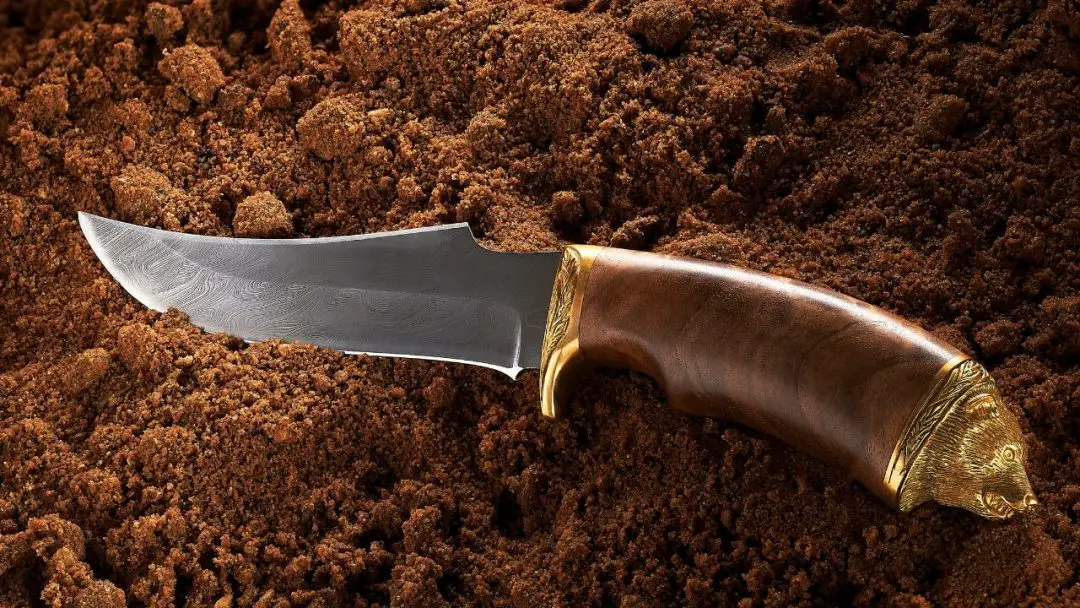
Just like any knife, a hunting knife is a really sharp blade that has a handle. This design, inherently, allows it to be used for many different things and tasks. However, there are many limitations to this and definitely some things that you should avoid doing to your hunting knife.
Hunting knives, while mainly intended to be used for hunting-related purposes, can be used for many tasks that are not related to hunting at all. Below I will go over a few of the different ways that you can use your hunting knife for things that are not related to hunting or processing a game animal.
Everyday Tasks
During your everyday activities and life, there are many times where it would probably be helpful to have a sharp blade on you. Whether it is cutting open a package or sharpening a pencil, a knife is a helpful and versatile tool to have on you.
While an everyday carry knife or pocket knife is usually the go-to blade for everyday tasks, hunting knives can actually be quite useful for these sorts of things.
Hunting knives are usually quite light and pretty small, so carrying them around with you is not a huge hassle. They are just great because they are light, compact, and can get done basically any of the tasks that you might run into on an everyday basis.
Personally, I really like carrying a knife with me almost everywhere that I go because I just find them SUPER useful. There is almost always a miscellaneous task that pops up out of nowhere that can easily be taken care of with a knife.
While I usually like to carry a pocket knife with me for everyday tasks, if I’m in a pinch or a hurry, a hunting knife will do just fine. The only thing that I don’t like about using a hunting knife for everyday carry is that they are often a little bit too bulky for me, but really that’s just personal preference.
Overall, hunting knives are really useful and versatile knives that work great for everyday carry. They are pretty light so it is usually no problem to just stick one in your pocket or backpack and be on your way. The number of times that I have used a knife during my everyday life is almost immeasurable and once you start carrying one, you realize just how useful they really are.
Outdoor Use
While hunting knives are mainly intended for use on tasks related to hunting, there are many times when you are out in the woods and a knife would be really useful to have. Luckily, hunting knives are quite versatile and can take on many tasks that you run into while out in the outdoors.
While I would prefer a good solid survival knife in most cases, hunting knives are pretty great because you can just throw one into your bag when you are heading out and they are light enough to not add too much weight to your pack.
Even if you are not going out into the outdoors on a hunting trip, a hunting knife can do a lot of the outdoor tasks that you might run into and need to complete.
One of the only things to take into consideration when taking a hunting knife out with you into the outdoors is that they are not really intended for hard and intensive use. The super-difficult work should be left for a solid survival knife.
If you think about it, hunting knives are intended to gut, skin, and process game animals. These are pretty mundane and easy tasks when compared to many of the outdoor jobs that you might run into when you are outside. It is just important to know the limits of your knife and not try to push the boundaries, or you risk breaking or permanently damaging your knife.
Overall, hunting knives are very versatile and can be used for many tasks that you might run into while in the outdoors. While they are pretty great and durable, just make sure that your hunting knife can handle the job because they are really not intended for this type of use. Just be sensible and careful.
Other Uses
While I have gone over outdoor and everyday uses of a hunting knife, there are so many situations where one would come in handy and so many ways to use one that I have neglected to mention.
If you haven’t caught on already, hunting knives are just pretty dang useful and versatile tools. If a knife can be used to complete a task, there is a pretty good chance that a hunting knife will work just fine for the job.
If I had to guess, there are probably thousands, if not millions, of ways to use a hunting knife. Just think of a way to use a knife, and a hunting knife can probably handle it.
The design of a hunting knife is very universal and standard, which makes it very vehicle and able to be applied to many different tasks. There really isn’t anything specialized or super out of the ordinary with a hunting knife, which makes it perfect for almost any task that could use a knife to complete.
Most hunting knives are pretty standard and can be applied to almost anything. There are just so many ways to use a hunting knife that I’m not going to even try to list anymore.
They are just bosses and taking on their intended tasks such as skinning, gutting, and processing game animals, but they are also beasts at other things as well. Whether that is outdoor tasks, everyday jobs, or specialized tasks, a hunting knife can usually handle it with ease and elegance.
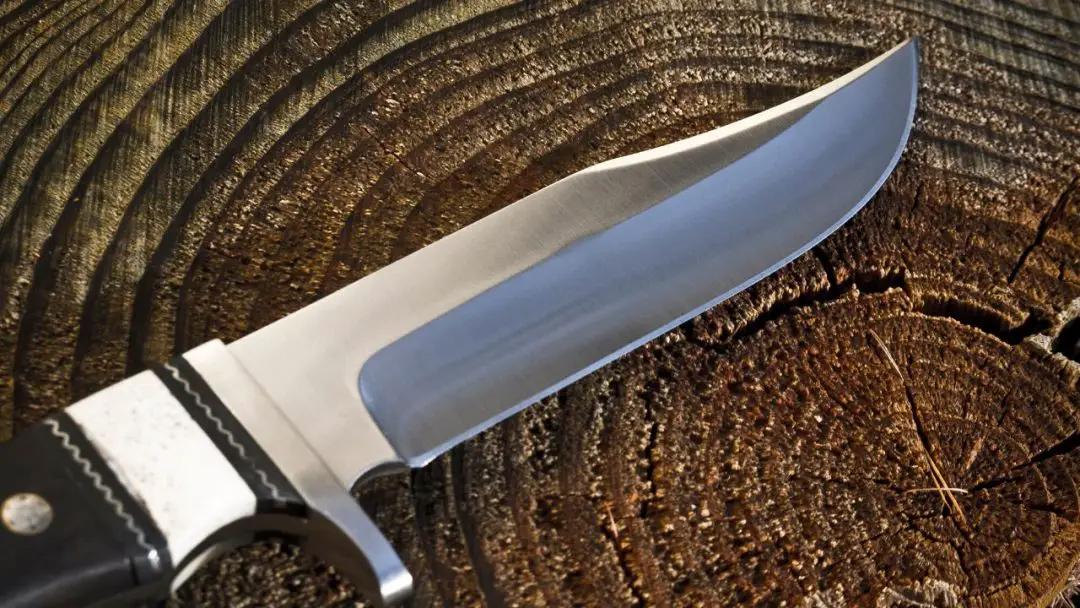
What To Avoid
With a hunting knife, the list of tasks and activities to avoid are pretty minimal and open-ended. It really just boils down to: don’t try anything that your knife cant handle.
If you think about it for a second, a hunting knife is designed and made with the intention of skinning and processing animals. In the eyes of most designers and knife makers, that is what hunting knives should be used for and it is what their creation process focuses on.
This means that hunting knives are not intended for other sorts of tasks. And while in the perfect scenearoi, you would have a different knife for every task or job that you happened across, that is simply never the case. Life happens and you often have to make compromises and exceptions.
While they are not necessarily intended for it, sometimes it is a good idea to use a hunting knife for something other than animal processing and skinning. In fact, I often encourage it because it makes your hunting knife SO much more useful when you can use it for other tasks and things that come up.
The key here is to know your hunting knife’s limits and know what it can handle. Some hunting knives are extremely durable and well made and can take on anything that you throw at it. Others, unfortunately, are less durable and should not be used for anything other than their intended purpose or you probably will snap them.
Just know your knife and don’t do anything that will break, bend, or damage it in any way. Having a broken knife with you is basically the same thing as if you didn’t have a knife with you at all.
Plus, when a knife breaks, it is often very unsafe both to yourself and to others. Don’t abuse or misuse your knife and make sure that your knife can handle the task before committing and doing the job. Be careful.
Do YOU Need a Hunting Knife?
This is actually quite a common question and with good reason. Sometimes it is very difficult to know what type of knife you need and a hunting knife sure looks like an appealing option. But do your REALLY need one?
Hunting knives are quite versatile and nifty tools to have on you, but if you aren’t doing work that could benefit from having one, there really isn’t a reason to have one.
It really comes down to whether or not you go hunting or spend time outdoors. If you aren’t going hunting, having a hunting knife seems kind of useless. There are much better, and sturdier, options out there if you want a knife that is strong and durable but you don’t go hunting a lot.
I suggest that you take a good look at what a hunting knife can handle, and what the tradeoffs of one are, and make your decision after careful analysis. The last thing that you want is a knife that you find useless or that you don’t like so take your time and really weigh your options.
Hunting knives are great, but if you aren’t a hunter or have a really good reason to have one, there are honesty some better options out there like a good everyday carry knife or survival knife.
For more information about choosing the perfect knife for your needs, check out my article on the subject. I go into great depth on how you can choose what knife you need and will get the most out of. It’s no good to have a knife you will never use, so go check out my article and make sure that you are making the right decision.
Here are some of my favorite hunting knives that are both practical for their intended purpose, but are also great for everyday tasks and other jobs that might pop up unexpectedly.
